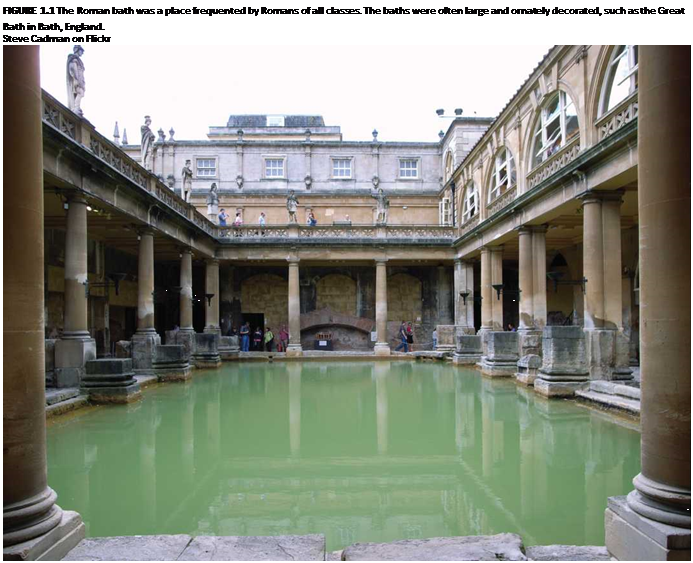The typical North American bathroom, as we know it today, has a relatively short history. The early "bath room" or "bath house" was strictly for bathing. It was not until the mid-nineteenth century that one room in the home included all personal hygiene activities in one place. However, some of the activities and rituals currently enjoyed in our baths had their origins centuries ago.
Early Civilizations and the Bath
Although evidence indicates that ancient Egyptians and the residents of Crete had bathing facilities, the bath was taken to new levels by early Greek, Minoan, and Roman civilizations,
which embraced it as a way to escape the stresses of everyday life. Most people found the experience so soothing that they typically bathed daily in public bath houses. The baths were not just for cleaning but were a way of life, and in many societies the baths were enjoyed by all social classes of people.
The Greeks developed the "gymnasium," which means "the naked place." After working up a sweat while exercising, the Greek participants would then take a very brief splash of water to cool down but did not really experience what we would consider a thorough cleaning.
The Romans were more serious about their bathing. The early Roman bath houses were often highly decorated with paintings, statues, and elaborate architectural details to add to the pleasure. Because aqueducts could deliver large amounts of water to cities, numerous and large public baths appeared. In addition to both hot and cold tubs, filled from pipes or aqueducts, these ancient bath houses may have included steam chambers, showers, and rooms with dry heat. These efficient systems would not be matched for another 1500 years. The Roman bathing ritual involved many steps. After soaking, bathers were covered with ointments and oils. The ointments and oils were then scraped off of the bather’s skin and along with them came the dirt.

The public bath house was also the center of social activities and a form of recreation (see Figure 1.1). For example, baths in the Roman City of Herculaneum included courts for playing ball and a gymnasium. Other baths incorporated libraries, shops, tennis courts, and snack bars. Because of the bath house’s significance in society, these cultures found no need to incorporate baths into private homes.
In addition to making bathing an enjoyable experience and a prominent part of their lives, the Greeks’ and Romans’ understanding and practice of good sanitation were extraordinary for the time. The Greek and Roman concept of the "bath" and their belief in the power of water has come full circle to the pools, hot tubs, soaking tubs, mineral baths, and spas we enjoy today.
Public baths were a part of other cultures as well. The "Turkish bath," a steam bath that is followed by a shower and massage, developed when Roman bathing customs were combined with those of nomadic people such as the Byzantines. The early Japanese culture also embraced communal public baths.
Latrines
Just as baths were public facilities in early Roman and Greek civilizations, so were latrines. Although, some early evidence of the home chamber pot was also recorded, Roman water closets and latrines were actually flushed by water. In addition to a public water supply achieved through aqueducts, the Roman Empire also established quite sophisticated sewer systems, which did not appear again until the nineteenth century.



